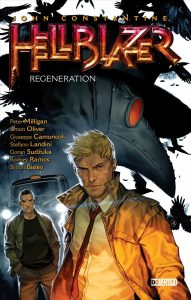The antecedents of many stories we publish today are, of course, those tales of psychic investigators, mystics and meddlers published in the late Victorian, Edwardian and early Post-Edwardian periods (in Western literature, that is).
How those characters operated, and what their professions were in the original stories, varied considerably. Some were unmistakably ‘responses’ to the popularity of Conan Doyle’s Sherlock Holmes stories; others arose as, and with, peculiarities which set them somewhat apart from the usual crime and detective tales of the time.
Essentially, they started with a mystery – an unsolvable crime, a suspected curse, a terrible apparition – and one way or another, an investigator was called or inserted themself into the scenario. Some spent their entire time debunking supposed hauntings, others used their specialist knowledge or even psychic gifts to deal with ‘real’ supernatural phenomena.
And there was no one career route for the investigators and experts being consulted – no Certificate in Occult Detecting. Just a few of the historical literary characters and their imaginative ‘professions’ include:
- medical philosopher (Dr Hesselius)
- occult psychologist (Flaxman Low)
- ghost seer (Aylmer Vance)
- ghost finder (Thomas Carnacki)
- exposer of ghosts (John Bell)
- mystic (Simon Iff)
- psychic doctor (John Silence)
- mental healer (Dr Xavier Wycherley)
- dream detective (Moris Klaw)
- psychic (Norton Vyse)
- psychic detective (Shiela Crerar)
- surgeon of souls (Dr Ivan Brodsky)
- ghost hunter (Jack Hargreaves)
- occult detector (Semi Dual)
Notably, almost all of these protagonists were male!
Similar characters did occasionally surface between and through two World Wars, notably Jules de Grandin (by Seabury Quinn) who was popular in the pages of Weird Tales, but the ‘Golden Age’ was passing and society had changed. From the nineteen fifties onward came a burst of noir and grittier approaches — the PIs and harassed cops, the newspapermen like Kolchak, more in keeping with the second half of the century. Vice, corruption, fears of Satanism, ‘Voodoo’ and all the rest – the seediness of the fifties to the eighties.
This in turn gave way in the eighties and nineties to what might be seen as two further branches of the genre:
1) those often conflicted investigators who walk a complex world of multiple belief systems and existential troubles – John Constantine, for example, Felix Castor (a freelance exorcist), Charlie Parker (a former police officer), and others.
2) the ‘urban fantasy detective’ incarnation where creatures like werewolves, frustrated witches, and the Fey, can be behind any door – more the world of Harry Dresden.
And so the genre became wider than ever before, though the classic characters were still available (and were even being re-discovered occasionally).
Today, with the welcome expansion of access to the voices of other cultures, the genre has opened up a wider world where the tweed jackets and brandy decanters of those early Western stories would themselves be bizarre. The borderlands may be there, and slowly encroaching as much in a Nairobi high-rise as in a Victorian mansion, in a Siberian shaman’s community as much as in a New York brownstone. Already ODM has published stories set in — and with protagonists from — Japan, Australia, African countries, India, and more. Strange events and strange investigators are now part of our shared global existence, not the old-style ‘exotic foreign people and places’ chucked in to thrill a jaded Western audience.
Occult Detective Magazine is proud to represent all, and you will find articles and commentary on the above in our pages.
Note: Author and ghosthunter-hunter Tim Prasil has a very useful set of resources on the early occult detectives in fiction here:
https://brombonesbooks.com/for-fun/the-chronological-bibliography-of-early-occult-detectives/

